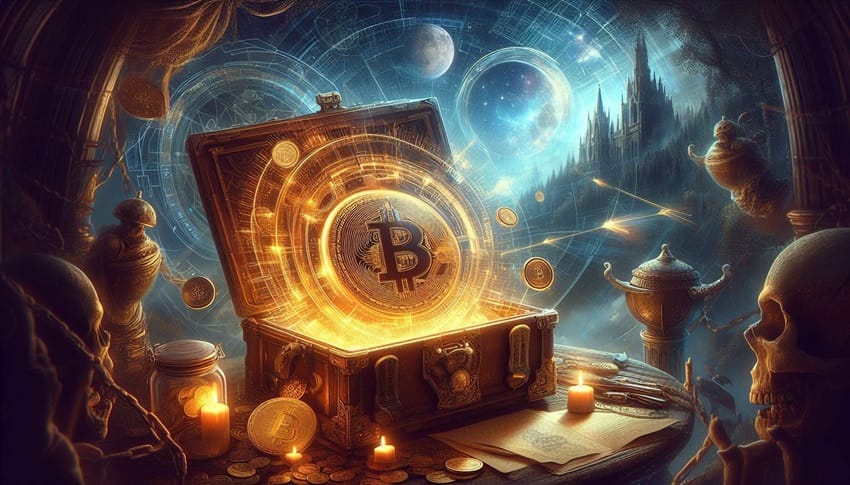Denis Vasin, the co-founder and lead developer of the Telegram-integrated perpetual decentralized exchange (DEX), Storm Trade, envisions the TON blockchain as a pivotal element in widespread cryptocurrency adoption.
The genesis of Storm Trade can be traced back to the inaugural TON hackathon, where Denis unveiled a prototype for a perpetual DEX on the TON blockchain. This endeavor earned second place, motivating Denis and his team to advance the project further. Funding came from TONcoin.Fund (previously known as TON Ventures). Since its launch on the TON mainnet, Storm Trade has flourished, with daily trading volumes hitting $5-20 million within just four months. “And it’s doubling every month,” Denis remarked.
Read more: Surpassing the $100 Billion Milestone: A Decade of Cryptocurrency Startup Investment
Storm Trade introduces a user-friendly mini-application within Telegram, optimized for mobile devices. It enables users to execute limit orders, market orders, and automate trading strategies. The platform primarily focuses on established, high-liquidity blue-chip assets, aligning with Telegram and TON’s mass adoption objectives.
“Storm Trade is a perpetual futures exchange, meaning we trade synthetic assets rather than real ones,” Denis explained. “Our liquidity efficiency is high because we don’t need our liquidity providers to supply assets separately in Bitcoin, Ethereum, TON, etc.”
Diverging from traditional DEX models, Storm Trade’s liquidity providers only need to supply a single asset (settlement asset) for all trading pairs, thus avoiding the complexity of managing multiple assets across fragmented pools. The platform relies on two primary pools, TON and USDT, for settlement, achieving higher liquidity utilization rates (50-100%) compared to conventional DEX models.
To ensure accurate pricing data, Storm Trade leverages oracle solutions like Pyth Network. A funding rate system is in place to manage risk for liquidity providers and maintain stability in perpetual futures contracts. In case of oracle malfunctions, maximum spread limits can halt trading if oracle data significantly deviates from expected values. During potential economic attacks, open interest, spread, and price impact limits are applied. Both the TON technical team and external firms audit Storm Trade to identify vulnerabilities in its smart contracts.
Commenting on the distinctions from Telegram trading bots, Denis noted: “Bots usually have text-based interfaces focused on speed and ‘aping’ new coins. Bots like Unibot cater to advanced DeFi users, while we target the general audience.”
Seamless Setup
Storm Trade offers a real trading terminal optimized for mobile devices within its mini-application. “Everything can be set up with a single click, allowing you to start trading immediately,” Denis explained during the AMA. “Importantly, we are a noncustodial platform. We don’t hold users’ keys or funds.”
Denis expressed his admiration for TON, stating, “TON is unique compared to other blockchains. It has the best chance for mass adoption, bringing its 800 million users to Web3. It focuses on the end-user experience. For instance, sending USDT to other Telegram users using their username is easy and convenient. It’s the fastest and most user-friendly payment system, akin to money transfer.”
He highlighted other advantages of TON over other blockchains, noting that while Ethereum is research-oriented and Solana is tech-centric, their approaches make it challenging to connect with users on a personal level. “For the best user experience and a deeply integrated native experience, you need a layer-1 blockchain capable of handling enormous, potentially unlimited loads. TON is designed for scalability and high user volumes, avoiding the complexities of Ethereum layer-2 solutions.”
Developing on The Open Network
Denis acknowledged the challenges of developing on TON, citing its current immaturity and unique development requirements: “Developing on TON is vastly different from working on other platforms. You have to reinvent programming patterns compared to Solidity. Smart contracts in TON must run in parallel, requiring manual handling of complexities like rolling back transactions mid-flight. It’s a completely different and technically challenging development model, and the ecosystem is still young, lacking mature development tools.”
The Token Generation Event (TGE) of the STORM token is anticipated for early summer. Denis views this milestone as crucial for showcasing strong trading data and enabling future developer expansion: “Post-token launch, there will be numerous incentives to accelerate our growth. Our roadmap is rich with plans for protocol improvements, social trading features like contests and copy trading, and further development based on user feedback.”

 Bitcoin
Bitcoin  Ethereum
Ethereum  Tether
Tether  Solana
Solana  Dogecoin
Dogecoin  XRP
XRP  USDC
USDC  Lido Staked Ether
Lido Staked Ether  Cardano
Cardano  TRON
TRON  Shiba Inu
Shiba Inu  Toncoin
Toncoin  Wrapped stETH
Wrapped stETH  Wrapped Bitcoin
Wrapped Bitcoin  Avalanche
Avalanche  Sui
Sui  Pepe
Pepe  WETH
WETH  Bitcoin Cash
Bitcoin Cash  Chainlink
Chainlink  Polkadot
Polkadot  LEO Token
LEO Token  NEAR Protocol
NEAR Protocol  Litecoin
Litecoin  Aptos
Aptos  Wrapped eETH
Wrapped eETH  USDS
USDS  Uniswap
Uniswap  Cronos
Cronos  Stellar
Stellar  Internet Computer
Internet Computer  Bittensor
Bittensor  dogwifhat
dogwifhat  Ethereum Classic
Ethereum Classic  Dai
Dai  Artificial Superintelligence Alliance
Artificial Superintelligence Alliance  WhiteBIT Coin
WhiteBIT Coin  Ethena USDe
Ethena USDe  POL (ex-MATIC)
POL (ex-MATIC)  Monero
Monero  Stacks
Stacks  Render
Render  OKB
OKB  Bonk
Bonk  Hedera
Hedera  Aave
Aave  Mantle
Mantle 



